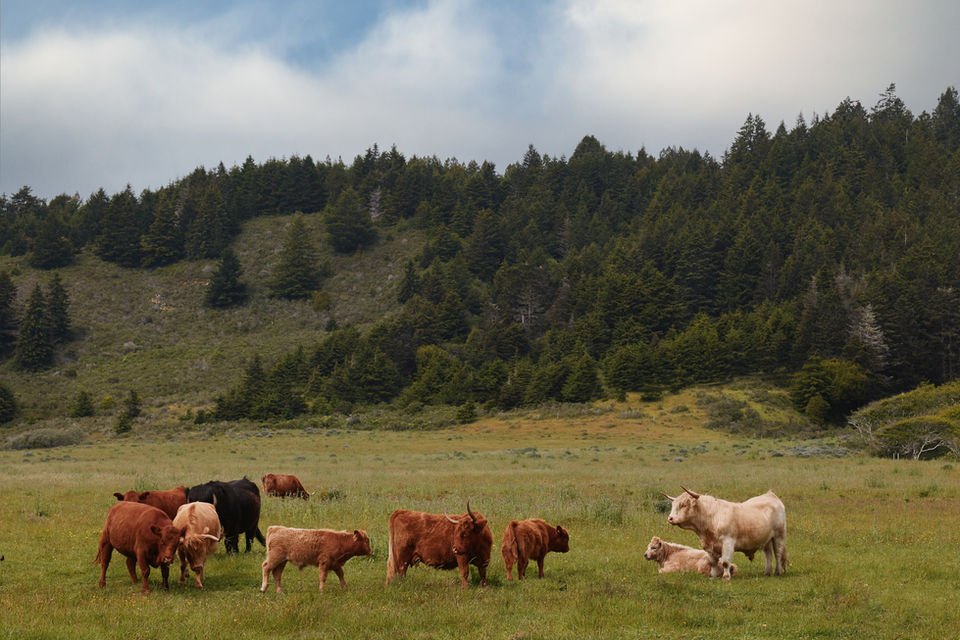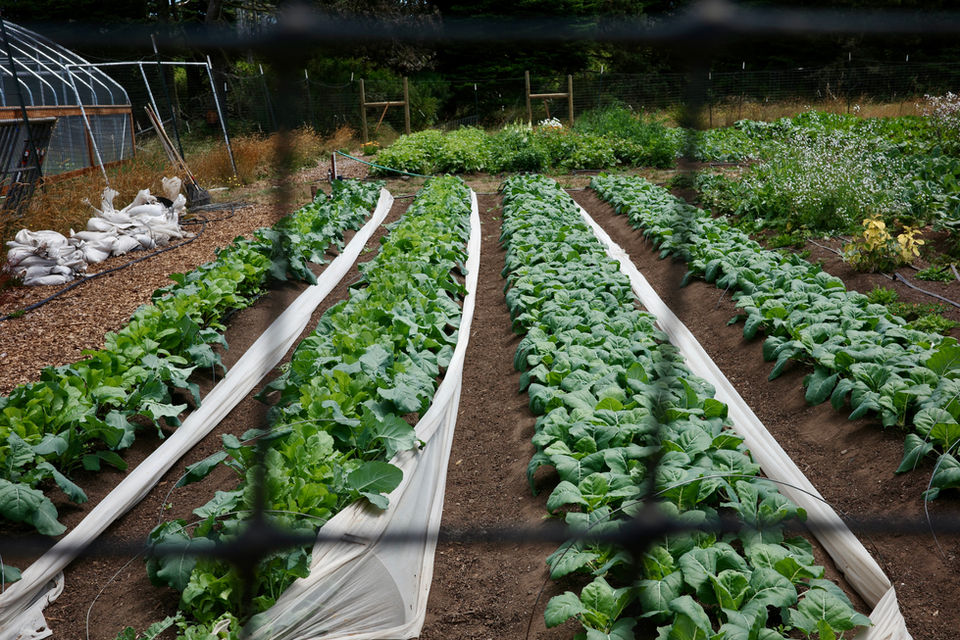The Farm at Harbor House Ranch
The Harbor House Ranch is located just south of Point Arena and comprises 320 acres of both ranch and agricultural land. Since breaking ground in February of 2021 the farm has expanded from the initial half acre footprint to a full acre comprised of year-round annual production alongside diversified perennials, trees and shrubs. Additionally, a 750 sq ft greenhouse and moveable high-tunnel provide ideal growing conditions for the temperate coastal climate of the Mendocino Coast.
The relationship between farm and kitchen is a natural one. A detailed dialogue between growers and chefs allows for a more tailored product, while also providing reciprocal edification allowing both to be ever evolving and innovating. Strategies such as intercropping or companion planting, utilizing the entire life cycle of a plant or modification to water applications all have unique and desired outcomes that came to fruition from the collaboration between the two entities. All harvests are then utilized by the kitchen for dinner service, lunch service, in-rooms and fermentation projects.
The farm at Harbor House Ranch follows the tenants of organic farming and aims to work within the natural ecosystem using sustainable and responsible agricultural practices with a special focus on building and maintaining soil health – healthy soil means healthy plants that are more resistant to pest and disease pressure. Methods such as following a crop rotation, use of cover cropping, nutrient recycling by means of reincorporating flail mowed crop stands and cover crop and establishing and enhancing biodiversity are just a few examples of a management program that work through strengthening natural processes. An ecological approach helps to provide homes to beneficial insects and flora and utilizes holistic strategies rather than symptomatic strategies often seen in agricultural practices. All of the above align with the ethos of the Harbor House Inn and its commitment to sustainability while simultaneously supporting local food economies.

Amy Smith, Farm Manager, The Harbor House Inn
Amy Smith fondly remembers the arresting aroma of strawberries and grapes bubbling away on her grandparents’ stove, thickening and concentrating as the just-picked fruit from their 60-acre Rhode Island farm transformed into the most ambrosial jam and jelly.
As a kid, she reveled in watching the effort they put into working and living off the land, rotating crops to keep the soil healthy, and taking care to use and proudly preserve all that they grew.
Nowadays, she still gets a thrill whenever a seed nudged into the earth sprouts and flourishes, bringing forth its remarkable bounty. It’s a sentiment that’s only been amplified, as she’s been tasked to nurture the exacting herbs, fruits, and vegetables needed for the rarified menus of some of the most accomplished chefs in the world.
As farm field manager for the Michelin three-starred Restaurant at Meadowood for six years, Smith expanded that St. Helena farm from one acre to five, and worked with staff so that nearly everything harvested was utilized as opposed to only a fraction previously.
In the aftermath of the devastating wildfire that leveled that restaurant along with a portion of its farm, she moved to Elk in February 2021, ready for a new challenge. She found it as the farmer for the Michelin two-starred Harbor House Inn, where she couldn’t be more excited to take that nascent farm to its full potential for a restaurant committed to evoking a true sense of singular place in its cuisine.
Moving from tourist-thronged Wine Country to a secluded, rural town on the Mendocino Coast might be jarring for some. But not for Smith, 37, who spent a summer working as a janitor at the U.S. Antarctic research station, when temperatures then reached a high of only 35 degrees with merciless wind storms that often made it treacherous to be outside.She’s no stranger to remote areas, having worked on two islands – Bear Island Farm in Bluffton, SC, where she co-founded a ½-acre sustainable farm from scratch; and Little Spruce Head Island, a privately owned off-the-grid sustainable living property in Penobscot Bay, ME, where she served as caretaker. Through those experiences, she learned self-sufficiency, teaching herself how to fix things, since getting a plumber or handyman to venture to the middle of nowhere was an arduous undertaking.
Since starting the farm at The Harbor House Ranch, Smith has expanded operations from the initial half acre footprint to a full acre, added season extension structures, expanded necessary infrastructure to support farm operations and added staff to aid in the goal of providing as many ingredients as possible for the restaurant’s exhilarating tasting menu.







